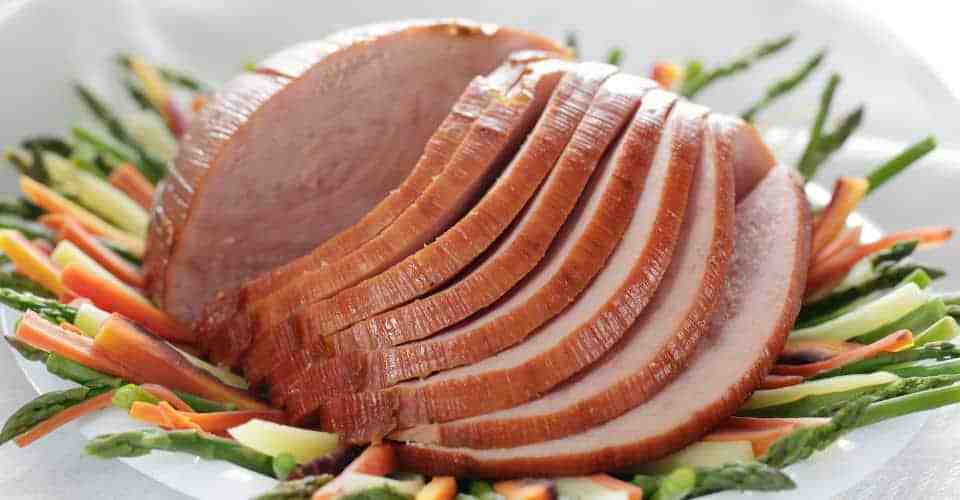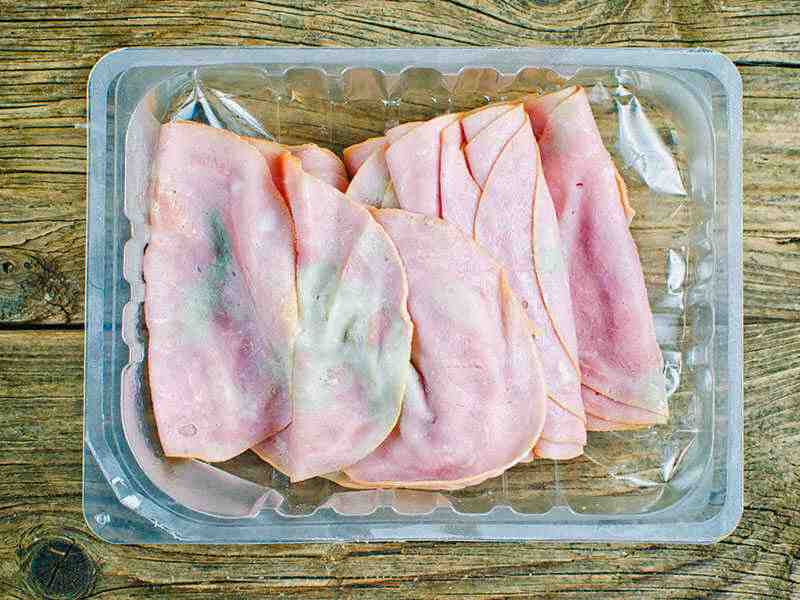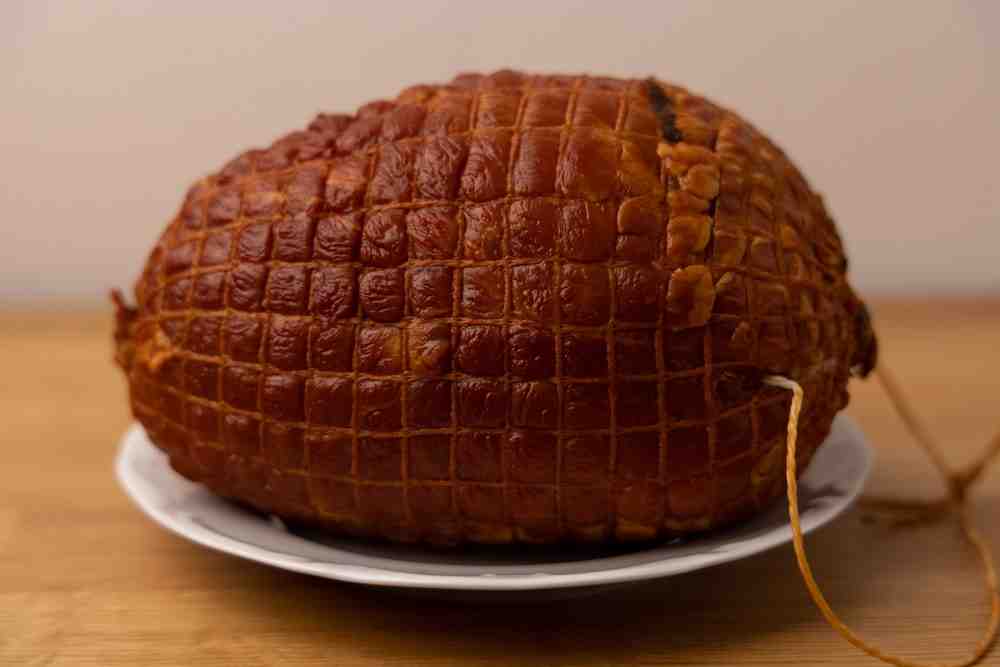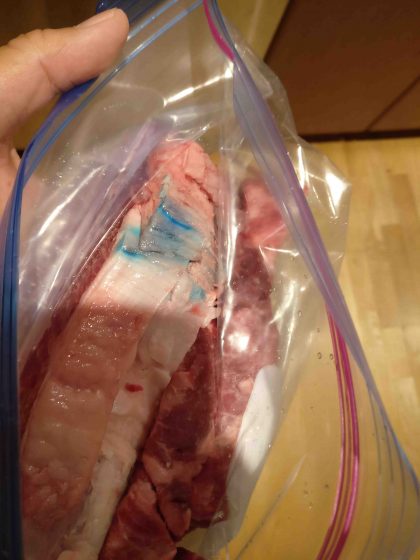How long does vacuum sealed ham last in the fridge?

Both plastic-packed and vacuum-packed hams must be refrigerated. A plastic-wrapped ham will keep for about a week. To see also : How long will a smoked ham last in the refrigerator?. A vacuum-packed ham must be consumed before the expiry date or within 1 week after the expiry date.
How long does the vacuum-sealed meat bought in the store last? Meats, such as beef, poultry, and fish, are usually only kept fresh for about six months when stored in the freezer by conventional methods. Using the vacuum sealer can extend the service life to about two to three years.
How long can you leave vacuum sealed meat in the fridge?
Vacuum sealing can also extend the shelf life of meat meats, but as anaerobic bacteria can grow at temperatures above 3 ° F, all vacuum-packed refrigerated meats must be thawed and cooked within a certain time. To see also : Why is bacon and ham pink?. of 10 days.
How long does vacuum sealed meat from store last?
Vacuum-sealed smoked meat (beef) should last up to six months in the freezer and up to five days in the refrigerator. The idea is to prepare the meat for storage as soon as possible.
How long will food last that has been vacuum sealed?
Frozen food that is closed in a vacuum has an average shelf life of 2-3 years, while it will last between 6 and 12 months, on average, stored in other ways. This may interest you : Is ham Coloured?. Most vacuum-sealed foods will last in the refrigerator for 1-2 weeks, which is much longer than typical 1-3 day foods if stored conventionally in the refrigerator.
How long does food stay fresh when vacuum sealed?
Foods last longer Most vacuum-sealed foods will last in the refrigerator for 1-2 weeks, which is much longer than typical foods for 1-3 days if stored conventionally in the refrigerator.
Can bacteria grow in vacuum sealed food?
Some harmful bacteria that only grow in an airless environment can grow much better and faster in vacuum-sealed products than if they were not vacuum-sealed. Unlike food spoilage bacteria, disease-causing bacteria may not change the color or appearance of food.
Can you vacuum seal ham?
Yes. Without cooking it can be closed in a vacuum: Small products, such as ham or pepperoni. Large cuts of meat, such as poultry, pork, beef and lamb.
How long will a vacuum sealed ham last?
Both plastic-packed and vacuum-packed hams must be refrigerated. A plastic-wrapped ham will keep for about a week. Vacuum-packed ham should be consumed before the expiration date or within one week after the expiration date.
What foods should not be vacuum sealed?
Foods that should not be vacuum-closed
- Raw mushrooms. Due to their natural ripening process, fresh mushrooms can decompose more quickly if closed in a vacuum. …
- Fresh bananas. Vacuum closing fresh bananas can speed up their ripening time. …
- Garlic and raw onions. …
- Soft cheeses. …
- Freshly cooked vegetables. …
- Whole apples.
Can you get sick from off ham?

5. Meats. Sausages such as ham, bacon, salami and hot dogs can be a source of food poisoning. They can be contaminated with harmful bacteria such as Listeria and Staphylococcus aureus at various stages during processing and manufacturing.
How long does it take to get sick of bad ham? Salmonella bacteria are often found in raw or undercooked meat, raw eggs, milk and other dairy products. The incubation period is usually between 12 and 72 hours. Symptoms usually last between four and seven days.
Can gone off ham make you ill?
However, this does not mean that eating expired food is risk-free. Eating foods that have expired or have expired can expose your body to harmful bacteria that can cause vomiting, diarrhea, and fever.
Is it safe to eat expired ham?
The ham lasts between 1 and 2 weeks beyond the date of the label, taking into account all the following variables. The shelf life of ham depends on several factors, such as the date of sale, the method of processing, and how it was stored.
What can bad ham do to you?
Like other spoiled meats, bad ham is a great living environment for harmful bacteria. As a result, you will experience mild to severe food poison symptoms after eating. They include stomach aches, vomiting, diarrhea, or sometimes fever.
How long after eating spoiled ham Will I get sick?
The time it takes for food poisoning symptoms to begin can vary. The disease often begins in about 1 to 3 days. But symptoms can start at any time between 30 minutes and 3 weeks after eating contaminated food. The duration depends on the type of bacterium or virus that causes the disease.
What happens if you eat bad ham?
“If you eat a food after the expiration date [and the food] spoils, you could develop symptoms of food poisoning,” said registered dietitian nutritionist Summer Yule, MS. Symptoms of foodborne illness can include fever, chills, stomach cramps, diarrhea, nausea, and vomiting.
What happens if you eat spoiled ham?

& quot; If you eat a food after the expiration date [and the food] spoils, you may develop symptoms of food poisoning & quot; said registered dietitian nutritionist Summer Yule, MS. Symptoms of foodborne illness can include fever, chills, stomach cramps, diarrhea, nausea, and vomiting.
Do you rinse country ham before cooking?

Rinse the country ham to remove some of the salty taste. Dry well, cook with a little butter in a frying pan over medium heat over medium heat for 2 minutes on one side and 2 minutes on the other side.
What is the best way to cook ham? FRYING BREAD HAM SLICES Do not remove fat from the slices and do not add oil or butter to the pan. Lower the heat to medium, cook on one side for about 2 1/2 minutes, turn the slices and cook for 21/2 minutes on the other side. They should be golden and cooked within five minutes.
How do you prepare a country ham?
Preheat to 300 ° F and cook for 20 minutes per pound or up to 163 ° F internal temperature. When finished, remove the ham from the bowl to cool and (while still hot) remove the skin or fat as desired. If you want a sweet coating, use the attached icing pack or your favorite ham icing recipe.
Can country ham be eaten without cooking?
The same rules apply to all cured hams produced in the United States, whether country-style or prosciutto-style. Dry curing with salt helps prevent bacterial growth, making hams safe to eat raw.
Do you fry country ham in oil?
FRYING HAM SLICES Do not remove the fat from the slices and do not add oil or butter to the pan. Lower the heat to medium, cook on one side for about 2 1/2 minutes, turn the slices and cook for 21/2 minutes on the other side.
Do you rinse a ham before cooking?
It is not necessary to wash a ham before cooking. If you ask us, the baked ham is delicious even if you leave it flat; however, marking a diamond pattern with a chef’s knife on the outer layer and brushing an enamel during baking makes the ham a showy centerpiece and adds flavor.
Should I put water in the pan when cooking a ham?
Gently cook the ham with at least 1/2 cup of water, wine, or broth in the pan and cover with foil to make sure the ham doesn’t dry out (until you’ve applied the glaze; then foil). comes off). Give homemade love to your ham! Avoid the twisted pack of prefabricated enamel and make your own.
Do you rinse off a spiral ham?
Preheat oven to 325 degrees F (163 C). Then make room in your oven to fit your pan. Remove the ham from its package and give it a quick rinse.
How do you clean a country ham?
Mold grows on hams during the long curing and drying process because high salt and low temperatures do not inhibit these robust organisms. WE DON’T HAVE HAM. Wash it with hot water and rub the mold with a stiff vegetable brush.
Why is my ham discolored?

Exposure to light and oxygen causes oxidation, which causes the decomposition of color pigments formed during the curing process. Care and oxygen chemicals, as well as ultraviolet and visible light energy, contribute to both chemical decomposition and microbial degradation of the product.
Sources :
